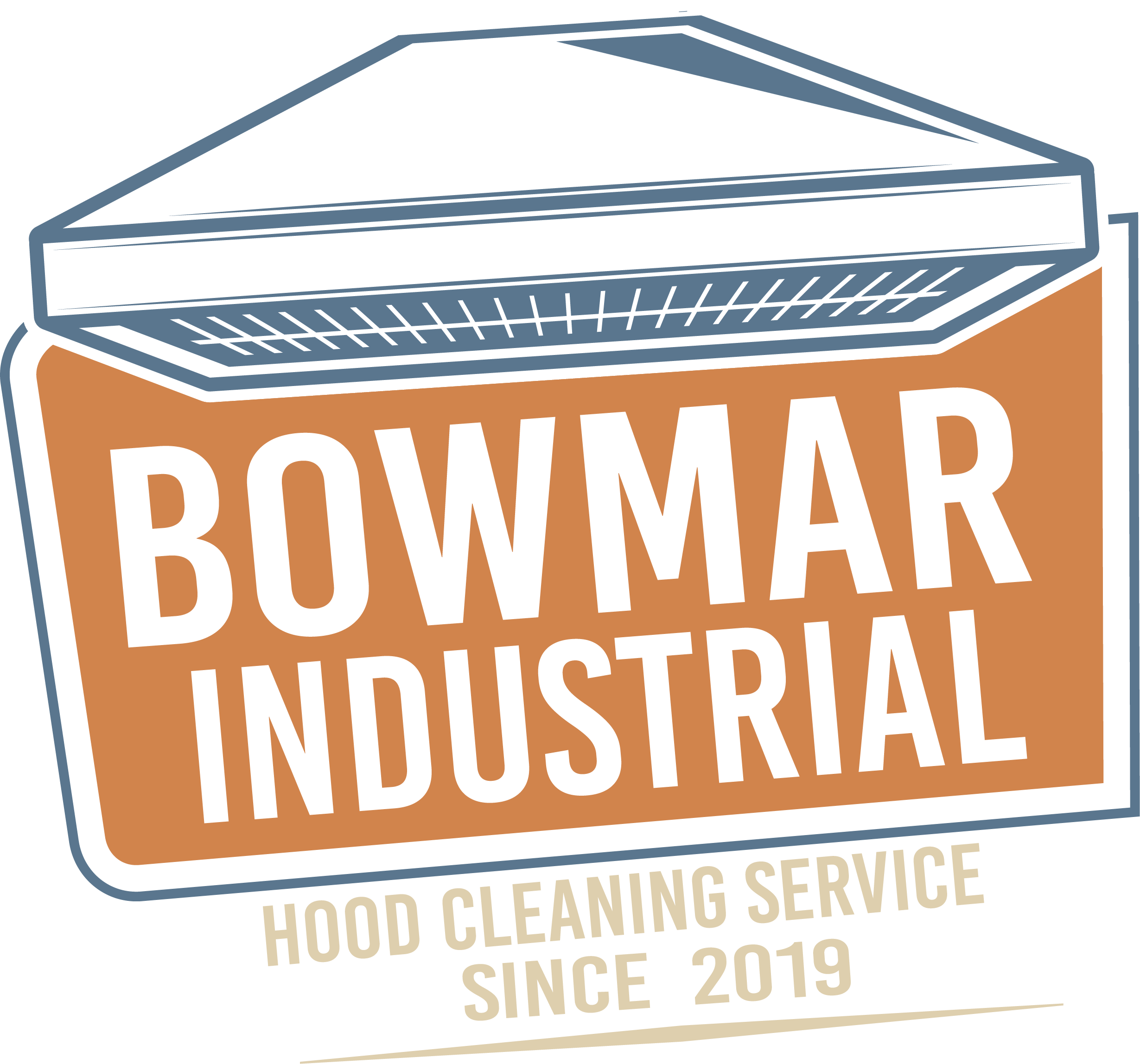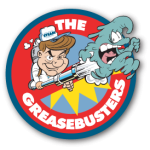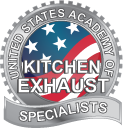Grease buildup in commercial kitchen exhaust systems is a serious fire hazard, with failure to clean causing 22% of restaurant fires according to the National Fire Protection Association. To combat this risk, NFPA developed the 96 standard that establishes cleaning frequencies based on cooking volume and methods, yet many restaurant owners struggle to determine their specific requirements. This guide breaks down hood cleaning frequencies by restaurant type, helping you maintain compliance and protect your investment.
Understanding the Variables
Before examining specific restaurant categories, it’s crucial to understand the factors driving cleaning frequency requirements. The type of cooking equipment, volume of operations, and cooking methods are critical. High-temperature cooking, especially with solid fuels or heavy grease production, accelerates buildup and demands more frequent cleaning. Understanding these factors explains why two similarly sized restaurants have vastly different schedules. Learn more about the real cost of skipping hood maintenance and why proper scheduling matters.
Fast Food and Quick Service Restaurants
Required Frequency: Monthly to Quarterly
Fast food establishments typically operate high-volume fryers, griddles, and char-broilers for extended hours. Burger chains, fried chicken restaurants, and similar operations using substantial amounts of cooking oil require monthly cleaning. Depending on menu items and cooking volumes, quick-service restaurants with moderate frying may qualify for quarterly service.
McDonald’s, Burger King, and similar franchises fall into this category due to their continuous high-temperature cooking and significant grease production. These kitchens accumulate it rapidly throughout their exhaust systems, even with excellent filtration. Our hood cleaning service ensures these high-volume operations meet NFPA 96 requirements.
Full-Service and Casual Dining
Required Frequency: Quarterly
Traditional sit-down restaurants with diverse menus, including family restaurants, sports bars, and casual dining chains, need quarterly cleaning. They usually operate multiple cooking stations with varied equipment, from sauté to broilers and fryers.
The quarterly schedule applies to restaurants operating 12-16 hours daily with moderate to high cooking volumes. However, those with extensive fried menus or char-grilled items may need monthly service. Many establishments also benefit from our filter exchange service to maintain optimal airflow between cleanings.
Fine Dining and Upscale Restaurants
Required Frequency: Quarterly to Semi-Annual
High-end restaurants often use cooking methods that produce less airborne grease. Techniques like sous vide, steaming, and careful sautéing generate fewer grease-laden vapors than high-volume frying or grilling. Many fine dining establishments qualify for semi-annual cleaning, though those with wood-fired grills or extensive wok cooking still require quarterly service.
Farm-to-table restaurants represent a unique subset of this category. While their emphasis on fresh, local ingredients doesn’t inherently reduce cleaning requirements, these establishments often favor lighter cooking methods like roasting, braising, and grilling over heavy frying. However, those with wood-fired ovens or extensive charcuterie programs may still require quarterly service.
The key factor is cooking method rather than price. For instance, an upscale steakhouse with heavy char-broiling needs more frequent cleaning than a fine dining restaurant focusing on delicate preparations.
Pizza Restaurants and Italian Kitchens
Required Frequency: Quarterly to Semi-Annual
Cleaning requirements for pizza operations vary. High-temperature deck ovens and conveyor ovens typically produce less grease than fryers, allowing for semi-annual cleaning. However, restaurants with fried appetizers or char-broilers require quarterly service.
Wood-fired pizza ovens present special considerations. While NFPA 96 requires monthly cleaning for solid-fuel cooking operations, enforcement and interpretation vary by fire marshal. Some inspectors may consider usage patterns and actual grease production when determining requirements. However, due to the subjective nature of these assessments and the potential consequences of non-compliance, it is advisable to err on the side of caution and maintain monthly cleaning for wood-fired ovens unless your local fire marshal provides written guidance otherwise.
Asian Restaurants and Wok Cooking
Required Frequency: Monthly to Quarterly
Wok cooking generates substantial grease-laden vapors due to high heat and oil use. Chinese and Thai restaurants typically require monthly or quarterly cleaning depending on volume. The intense heat and vaporized oils from wok cooking create significant accumulation in exhaust systems. Japanese teppanyaki operations, while using different equipment (flat iron griddles), produce similar levels of grease and smoke due to their high-heat cooking methods and follow the same cleaning frequency.
Stir-fry restaurants should plan for monthly service, while mixed-menu restaurants with sushi and lighter preparations may qualify for quarterly cleaning. Beyond hood cleaning, these high-grease operations often require comprehensive kitchen cleaning services to maintain safety standards.
Institutional and Low-Volume Kitchens
Required Frequency: Semi-Annual to Annual
Churches, senior centers, seasonal operations, and employee cafeterias often qualify for semi-annual or annual cleaning. These facilities typically operate limited hours with lower cooking volumes and less intense methods. Even low-volume operations must maintain proper fire extinguisher service alongside their hood cleaning schedule.
Schools and hospitals fall into a special category. While they may cook high volumes during serving periods, their limited hours and cooking methods allow for semi-annual service. However, facilities with extensive frying or grilling programs require quarterly cleaning.
Special Considerations
Several factors influence standard cleaning frequencies:
24-Hour Operations: Any facility cooking 24/7 requires monthly service, regardless of cooking type.
Solid Fuel Cooking: Charcoal, wood, and other solid fuels require monthly cleaning.
Heavy-Volume Operations: Even with cleaner cooking methods, high volumes may require more frequent service.
Multi-Concept Kitchens: Ghost kitchens and facilities operating multiple restaurant concepts must consider their combined output. Regular kitchen exhaust maintenance between cleanings helps these complex operations run efficiently.
Ensuring Compliance
While this guide provides general requirements, local fire marshals may impose stricter standards. Additionally, insurance companies often require NFPA 96 compliance documentation. Regular cleaning by certified professionals ensures you meet all requirements while maintaining safe and efficient operations. Avoiding proper maintenance can lead to serious consequences, as detailed in our complete guide to commercial kitchen hood cleaning.
Bowmar Industrial Services offers NFPA 96 compliant hood cleaning in the Austin and San Antonio area. Our certified technicians assess your operation and recommend cleaning frequencies based on your equipment, menu, and cooking volumes. Contact us at (512) 861-5841 for a free evaluation to ensure your kitchen meets safety requirements.




